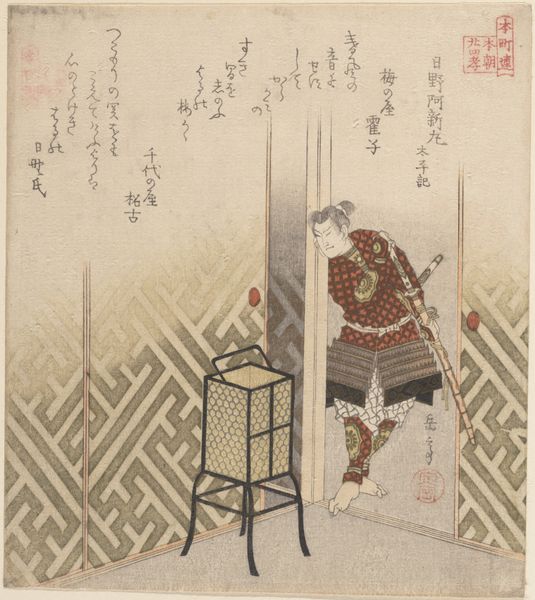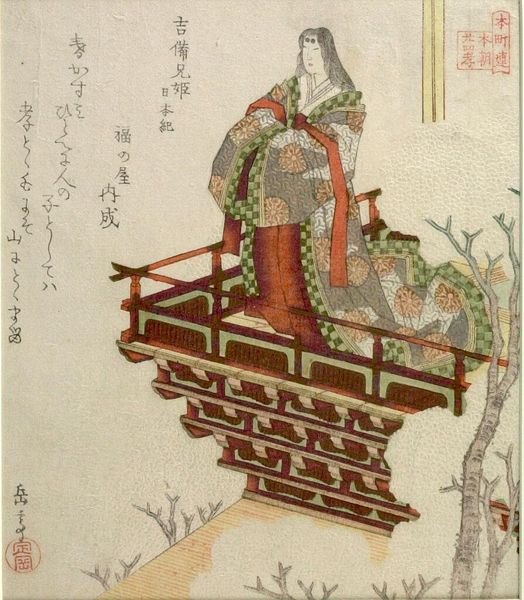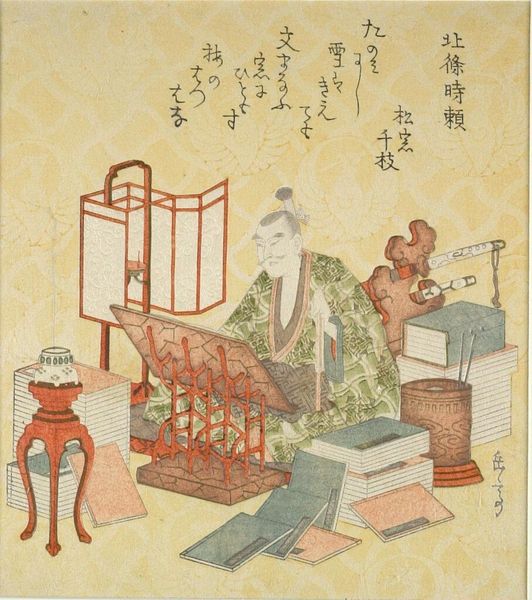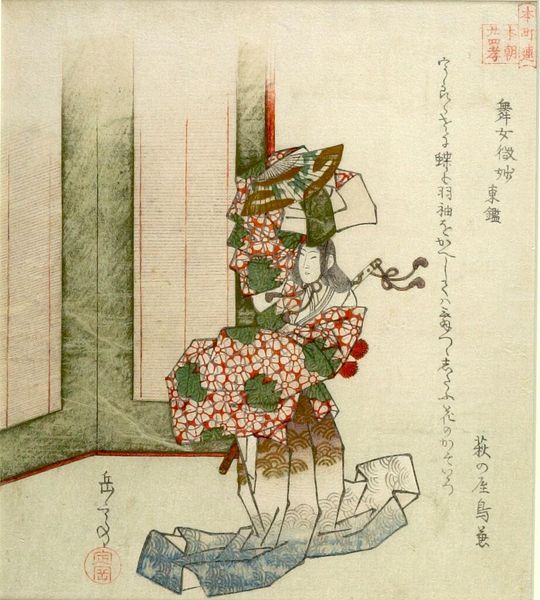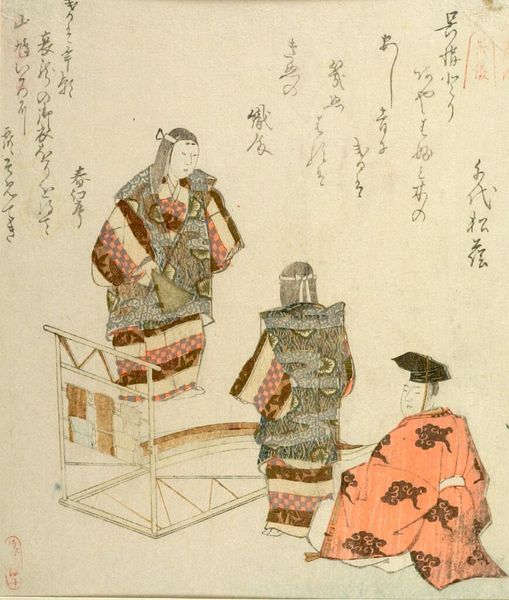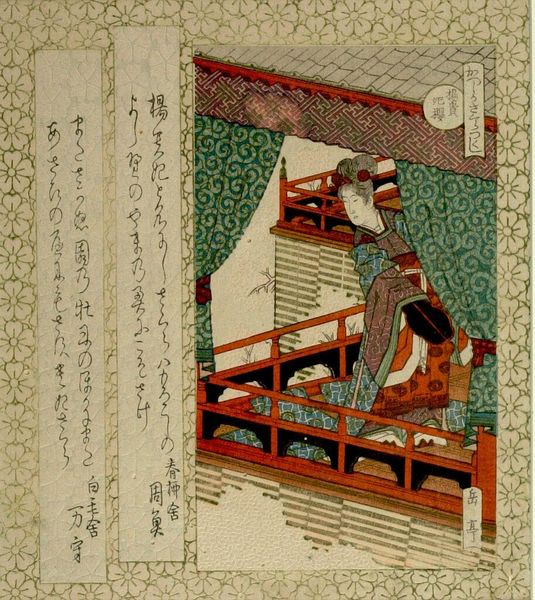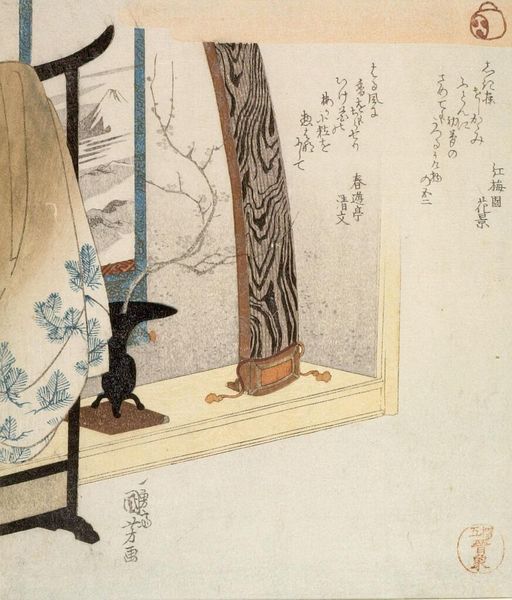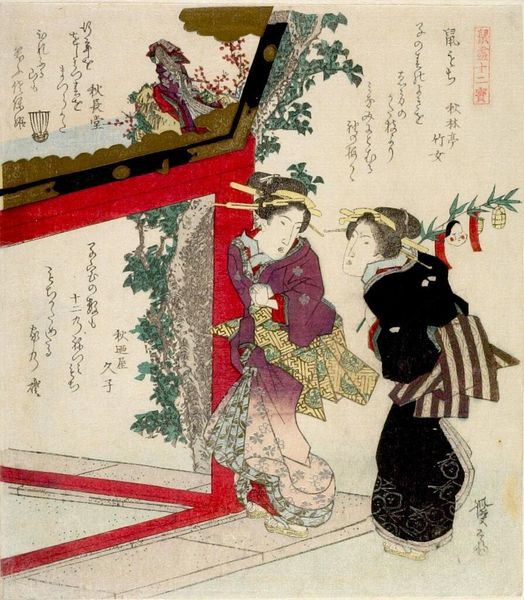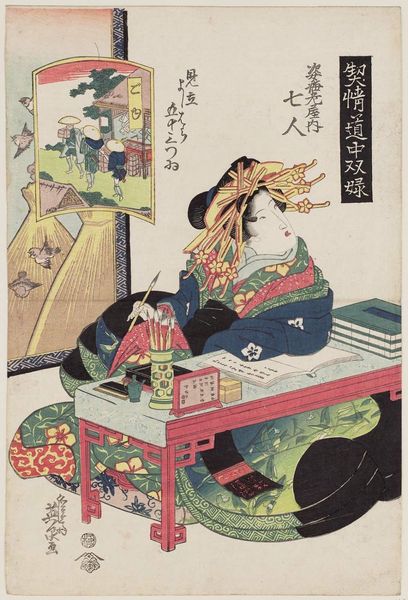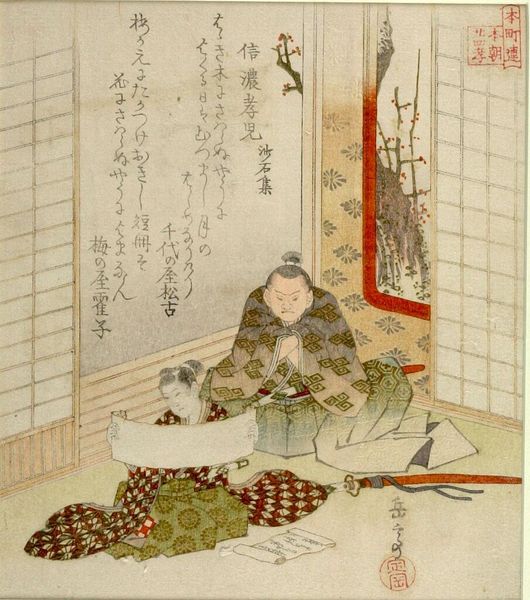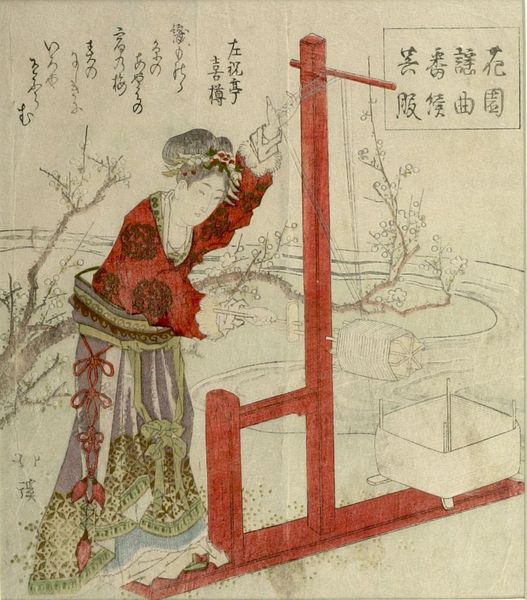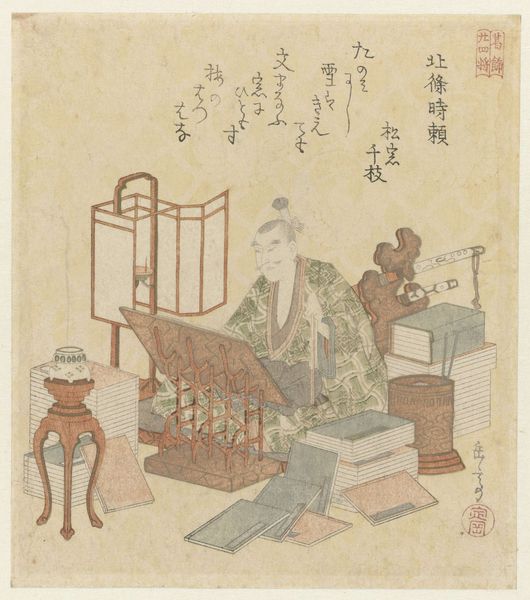
Hino no Kumawakamaru from the Record of the Great Peace (Hino no Kumawakamaru: Taiheiki), from the series Twenty-Four Japanese Paragons of Filial Piety for the HonchÅ Circle (HonchÅren honchÅ nijÅ«shikÅ) c. 1821 - 1822
0:00
0:00
Dimensions: Paper: H. 20.5 cm x W. 18.0 cm (8 1/16 x 7 1/16 in.)
Copyright: CC0 1.0
Editor: Here we have Yashima Gakutei's woodblock print, "Hino no Kumawakamaru," part of the "Twenty-Four Japanese Paragons of Filial Piety." The patterns on the screen are quite striking. How does the artist's choice of materials and production influence your interpretation? Curator: Notice how the woodblock process allows for the replication of the same image, facilitating broader dissemination and consumption of this narrative of filial piety. Consider the socio-economic implications of producing multiples. Was this artwork intended for elite circles or a wider audience? Editor: I see. So, the printmaking process itself democratizes access to the story. Curator: Precisely. And what about the materials used? The paper, the inks – how do these contribute to our understanding of the artwork’s function within its society? Editor: It gives a fresh perspective, focusing on the physical creation and its cultural context. Thanks!
Comments
No comments
Be the first to comment and join the conversation on the ultimate creative platform.
